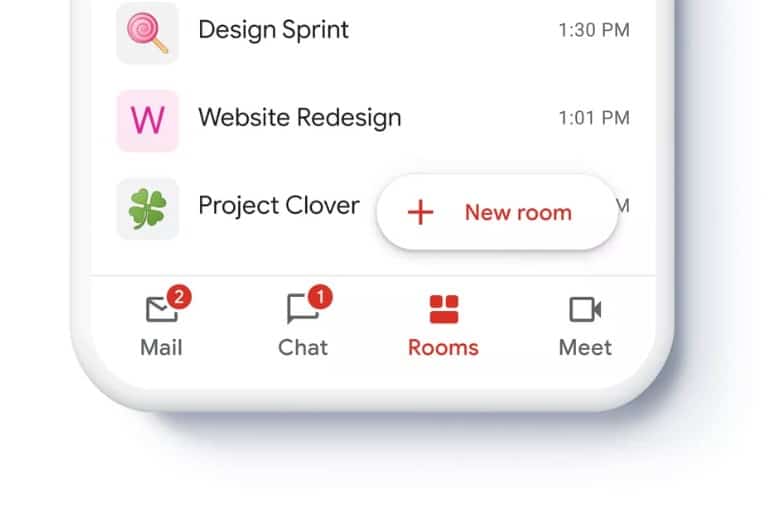True to Google’s penchant for just announcing things right after they’ve leaked, the company has unveiled a grand redesign of Gmail for G Suite business users ahead of next week’s Google Cloud conference. The app isn’t so much “Gmail” anymore as it is a unified app for all of Google’s communication platforms: Gmail, Chat, Rooms, and Meet.
It will be available as an “early access preview” to G Suite customers this week and roll out to all G Suite customers later this year. As for the consumer version of Gmail, it seems as though little will change in the short term. Google says that it is “actively thinking through how and when to bring this experience to the consumers who might want it.”
Javier Soltero, who rolled in to Google last November with the mission of cleaning all of this up, characterizes it as an “integrated workspace” that should make it easier for workers to shift between these different modes of communication without feeling lost. So, for example, someday the chat box that already appears in a Google Doc or a Google Meet window wouldn’t be a random extra box, but instead be integrated with your other chats or rooms.
/cdn.vox-cdn.com/uploads/chorus_asset/file/20085660/files___tasks.gif)
Right now, however, the main change is simply putting these tools into the same app (on your phone) or window (on your desktop). It should be less bouncing around between browser tabs and apps. In one example, users on the desktop will be able to get a view with a chat in one column, a doc in another, and a Google Meet video chat hovering over both.
While there are some links in Gmail right now to these other products, this is more of a wholesale integration. It’s the next logical step for Google after it already pushed Google Meet into Gmail this past May.
Putting all these different communication vectors into a single app has an additional benefit: setting a Do Not Disturb status across all of them as well as muting their notifications in a single place. You will also be able to search chats as easily as you can search Gmail. Google says that these integrations enable users to “quickly join a video call from a chat, forward a chat message to your inbox, [or] create a task from a chat message.”
Google is also trying to make certain collaboration tasks a little easier. The distinction between Chat and Rooms, for example, is a little fuzzy until you realize Rooms are meant to be more persistent spaces to discuss projects. Google is adding lightweight versions of other G Suite products to Rooms: each will have its own areas for assigned tasks and files.
Just as Microsoft is leveraging its Office 365 dominance to get its users to adopt Teams, Google is clearly leveraging Gmail’s popularity to push its own collaboration tools. For G Suite customers who want to fully live inside Google’s ecosystem of tools, the new integrations could make it easier to organize their shared work. For everybody else, it might end up being a set of unwanted add-ons that are increasingly hard to avoid.
The changes pivot G Suite to being primarily about Google Docs, and they pivot Sheets to being primarily about Google’s collaboration tools. G Suite has a bunch of products with overlapping features: Docs, Sheets, Chat, Meet, Tasks, Keep, Drive, and Gmail all have little pieces of each other integrated, but it’s all too easy to get lost.
“The history of these products is that they were all built individually,” Soltero says, “and they all had a core set of opinions that were obvious to everyone: multi-user, user collaboration, etc. … They all had the same set of shared ideas but they were not necessarily driving toward a shared end goal.”
That goal is now much clearer: make G Suite’s communication apps the central point and organizing principle for all those other products. Outlook’s tabs are mail, search / files, and calendar. For Gmail, all the tabs are about communication tools. It’s a move that’s clearly directed at heading off both Microsoft Teams and Slack. Google’s intent is to be at the forefront of a new definition of what a productivity suite is — but those other companies are essentially doing the same thing.

